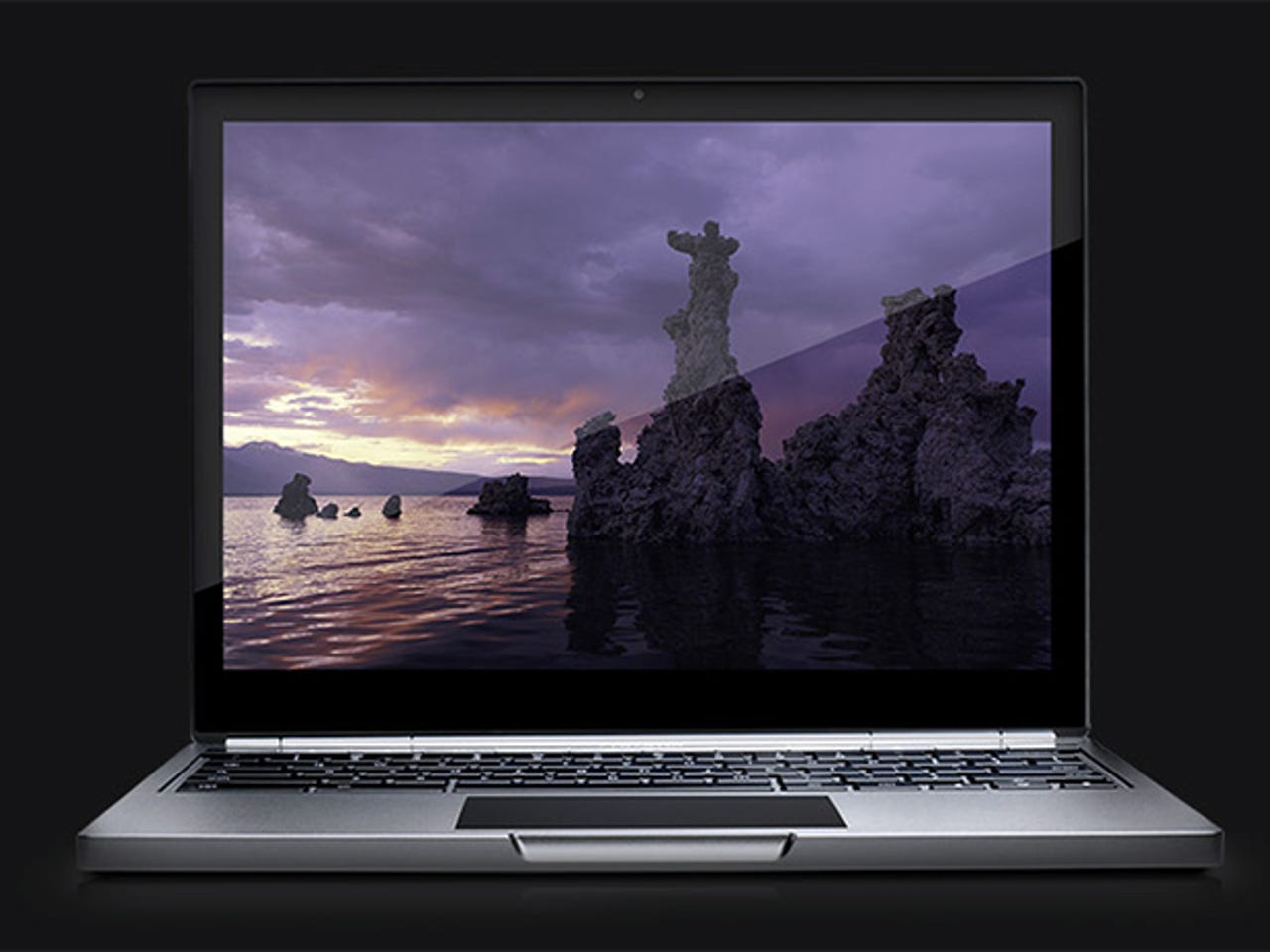Google Chromebook Pixel review


Google Chromebook Pixel
Chromebooks have been around in one form or another for a couple of years now. However, aside from some early limited wins, these Chrome OS-based devices have yet to fully win over consumers or the BYOD crowd as a viable alternative to a fully-fledged laptop. Add in the fact that most offerings so far have been budget devices and a pretty limited-use picture begins to appear. Can Google's premium-priced, own-branded Chromebook Pixel change all that?
The Chromebook Pixel went on sale in the US on 21 February at $1,299, but UK buyers had to wait a little longer to get their hands on the machine, which sells for £1,049 (inc. VAT; £874.17 ex. VAT).
At the February announcement Google claimed that its device "brings together the best in hardware, software and design to inspire the next generation of Chromebooks", adding that "we set out to rethink all elements of a computer in order to design the best laptop possible, especially for power users who have fully embraced the cloud".
Price comparison
From the numerous Chromebook Pixel reviews littering the web, one message comes across loud and clear: it's a premium machine at a premium price point. So, before we examine whether it's any good or not, we thought it might be useful to see what else you can get for a similar outlay (NB: UK prices below include VAT).
- 11-inch MacBook Air (64GB) — £849
- 13-inch MacBook Air (128GB) — £999
- 13-inch MacBook Pro (non-Retina display) with Intel Core i5 processor — from £999
- 13-inch MacBook Pro with Retina display, Intel Core i5 and SSD storage — from £1,249
- Sony VAIO T13 (13.3-inch) touchscreen ultrabook with Core i7 processor, SSD + HDD — from around £999 RRP.
Clearly, the Chromebook Pixel is more expensive than a number of the options listed. Note that it has a higher-than-Retina-resolution display (239 pixels per inch, versus the Retina's 227ppi), which is also a touchscreen — a feature matched only by the Sony VAIO T13 in the list above.
Design and hardware
Right out of the box, the sleek, metallic Chromebook Pixel shouts 'premium design'. Its key feature is one of the highest pixel density displays on the market. The screen measures 12.85in. across the diagonal and has a resolution of 2,560 by 1,700 pixels, giving it a pixel density of 239ppi. Apple's 13.3in. MacBook Pro with Retina display, by contrast, has a resolution of 2,560 by 1,600 pixels, or 227ppi.
The Chromebook Pixel measures 29.77cm wide by 22.46cm deep by 1.62cm thick and weighs 1.52kg (3.35lb). It may look elegant, but you're certainly going to notice this device in your travel bag.
The shell of the machine is made of anodised aluminium, and Google has obviously gone to some efforts to make the chassis as sleek and smooth as possible with features such as hidden vents, no visible screws and speakers placed beneath the backlit keyboard.
The touchpad has also received special attention; it's made of etched glass and is honed using a laser for extra precision, according to the company. It certainly performed accurately enough in our evaluation and is complemented well by the touchscreen, which is equally responsive.
The Chromebook Pixel is powered by an Intel Core i5 processor (the 3427U model) with 4GB of DDR3 RAM. On-board storage is limited to a 32GB SSD, but Google is also providing one terabyte of storage in the Google Drive cloud, which is free for three years, starting from the date the offer is redeemed. An LTE-equipped version of the Pixel is also set to go on sale shortly in the US; this will cost $1,449 and will include a 64GB SSD, in addition to the Google Drive offer.
Around the outside of the chassis, you'll find an SD flash card reader, two USB 2.0 ports and a Mini DisplayPort for mirroring or extending the desktop to a second screen. There's also dual-band Wi-Fi (802.11a/b/g/n) and Bluetooth 3.0 connectivity, plus a forward-facing 720p HD webcam for video calling.
Thanks to Google's considerable efforts on the hardware front, the user experience is as you'd expect on a top-quality piece of kit. The touchpad and touchscreen are both accurate and responsive, and the CPU/RAM/SSD combination keeps things ticking along nicely, even with multiple tabs loaded in the browser.
The Chromebook Pixel will also boot from cold in just a few seconds, which is a distinct advantage.
On the downside, the device does get noticeably warm when used for prolonged periods, while battery life is disappointing for a laptop in this price bracket: although Google claims 'up to 5 hours of active use', we struggled to get more than half that with continual multitasking usage.
Software
Unlike a 'normal' laptop, the Pixel comes with Google's Chrome OS as its default operating system. Once logged in for the first time, you get the Chrome browser, and a number of shortcuts to other Google services, such as the Chrome Web Store for downloading more apps, Google Maps, Gmail, Google Calendar, Google Docs/Sheets/Slides and the G+ social networking platform, which supports video calling. There's also a Files app for local file management.
This means that, essentially, you're limited to doing anything that you would normally do in a web browser. Obviously browsing the web requires an internet connection, as does most of the functionality of a Chromebook, although Google has provided some offline capability for those times when you're not connected.
Google Docs, Gmail (composition/review), Calendar and Scratchpad will all work offline in one form or another, and you can still playback media files stored locally on the device via the Files app.
If you're logging into the machine using a Google ID that already has Chrome apps associated with it, the Pixel will automatically download and sync them the first time you log in, providing the option to sync across devices is switched on in your account.
What you cannot do, though, is install any kind of 'normal' program as you would on a Windows or Mac laptop — unless there's a version already available from the Chrome Web Store.
This is a serious limitation, although the Chrome OS platform is gaining in popularity with developers, with more web apps joining the store every day from the likes of Box, Feedly, Evernote, Dropbox, TweetDeck. Over time, there's an increasing chance you'll find what you want there.
Conclusion
The Chromebook Pixel does everything it can do very well, but with a lack of touch-optimised apps available and no support for desktop/legacy apps its usage could be limited, depending on your needs. That said, if the majority of your usage is web browser based (or could be) then there are a number of touches that make the Pixel a pleasure to use.
Although it's visually pleasing and well specified, particularly in the display department, the Chromebook Pixel not a perfect machine: battery life is a little disappointing and you can expect some heat and fan noise after a few hours' use.
In the end, though, it's the premium price tag that makes it difficult for us to recommend the Chromebook Pixel — espcially at $1,449 for the forthcoming version with LTE connectivity.